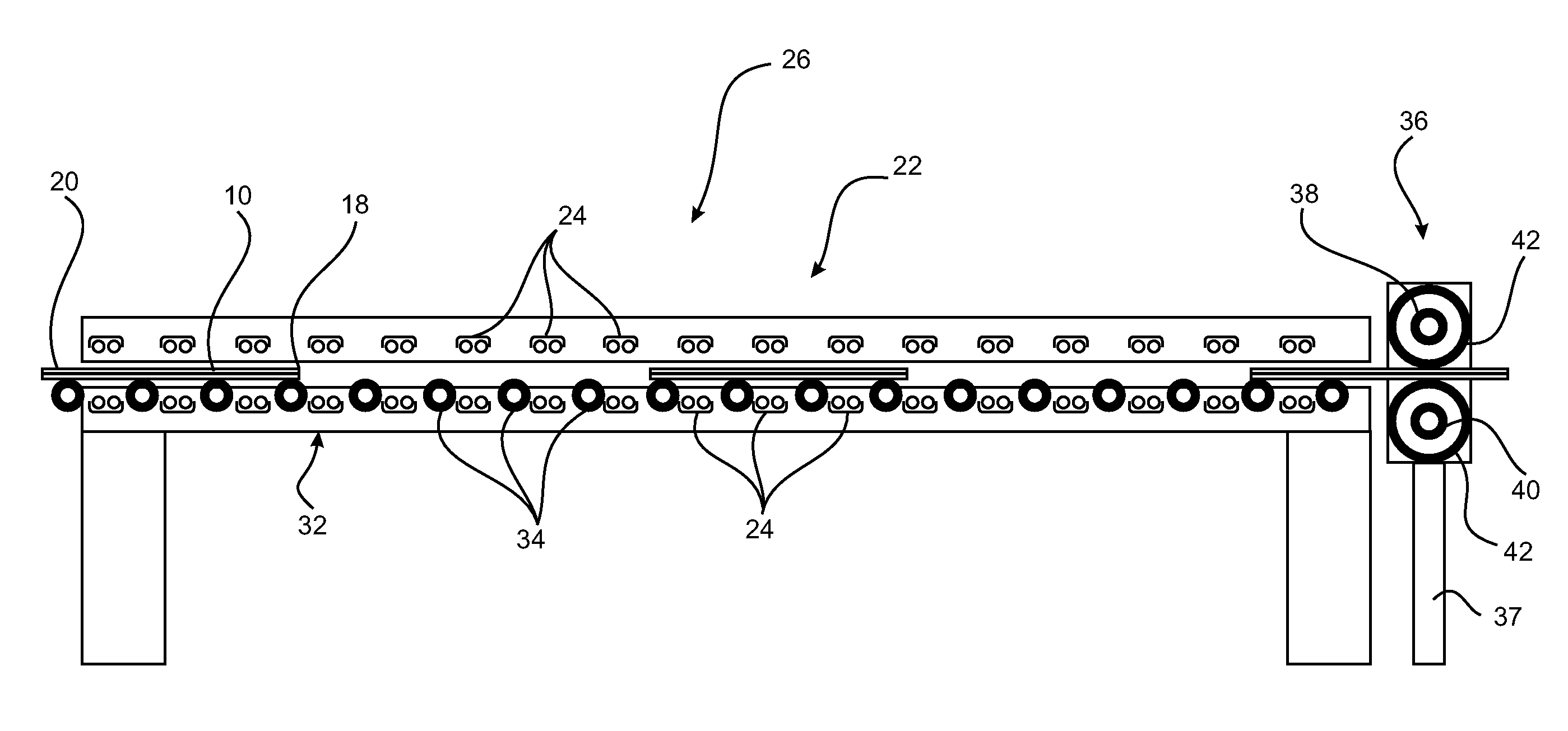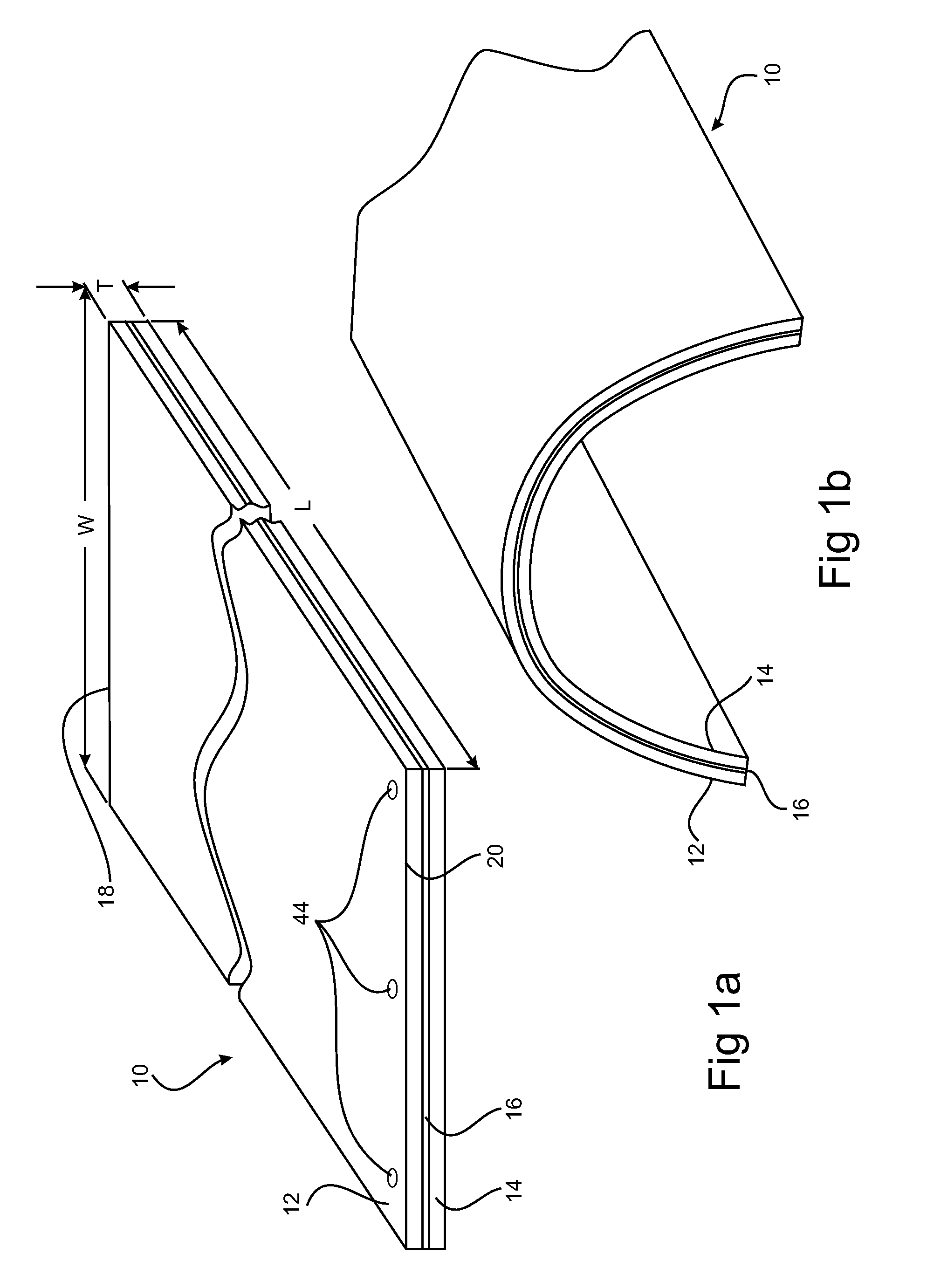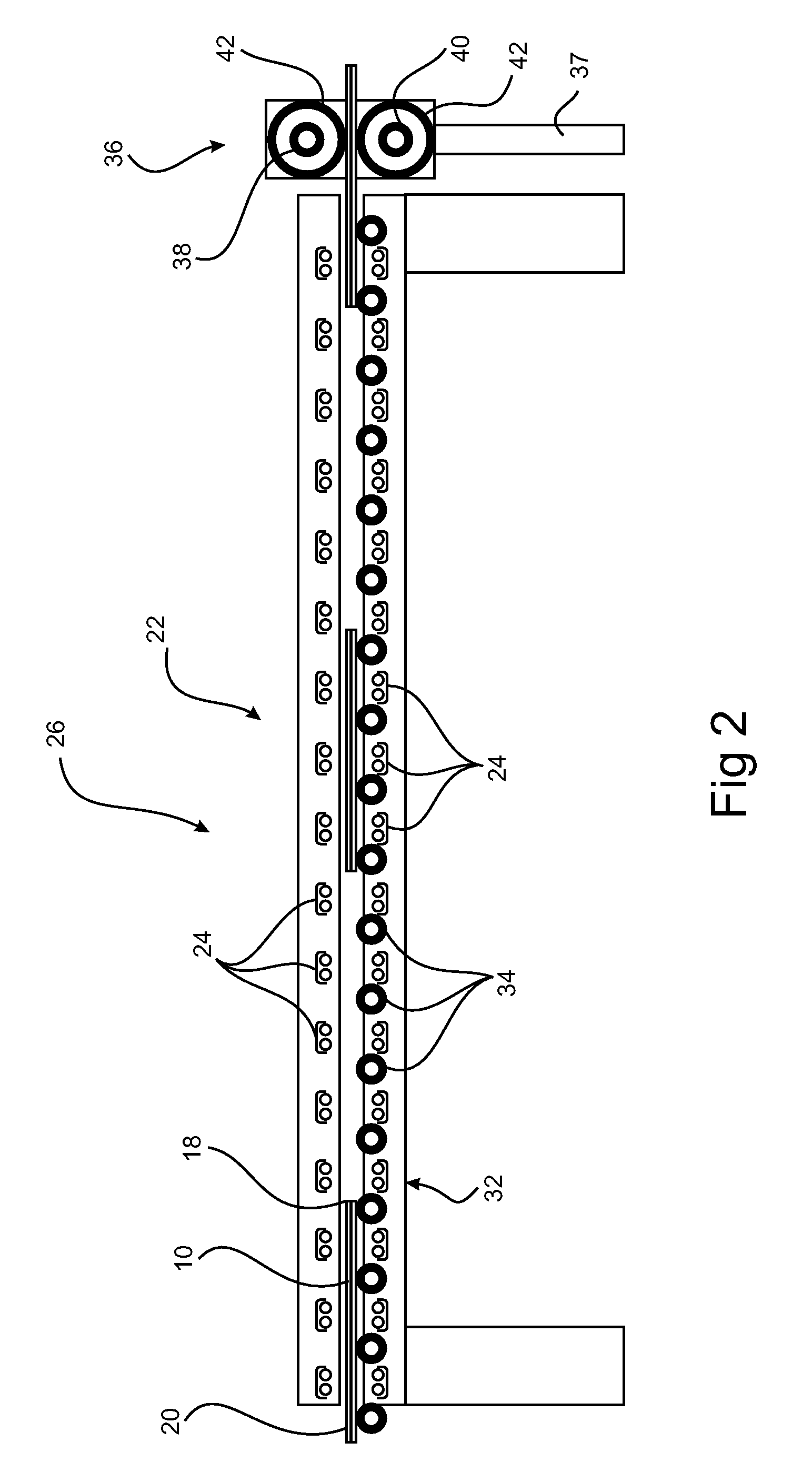Single Stage Glass Lamination Apparatus and Process
a glass lamination apparatus and single stage technology, applied in the direction of lamination, instruments, spectacles/goggles, etc., can solve the problems of inacceptable use of glass, low productivity of such prior art processes, and slow both processes
- Summary
- Abstract
- Description
- Claims
- Application Information
AI Technical Summary
Benefits of technology
Problems solved by technology
Method used
Image
Examples
example
[0053]A single heated zone of 5 m in length and 2.6 m wide, containing an array of 20×5500 watt heating elements in the form of medium wave infrared emitters with gold reflectors arranged to reflect heat towards the glass sheet assembly. The array of heating elements is positioned approximately 100 mm from the exterior faces of the first and second glass sheets. The infrared emitters are evenly spaced across the width and breadth of the oven so that the oven has a heating zone of 2500 mm in length. All measurements of temperature of the glass sheet assembly were recorded using thermocouples placed in between the first glass sheet and the layer of laminating film, approximately 200 mm in from the trailing edge of the glass sheet assembly (one being placed at the centre, one 200 mm in from the left hand side and one 200 mm in from the right hand side). The heat output from the infrared emitters is controlled using three infrared pyrometers—one of the infrared pyrometers is used for co...
PUM
| Property | Measurement | Unit |
|---|---|---|
| temperature | aaaaa | aaaaa |
| thickness | aaaaa | aaaaa |
| speed | aaaaa | aaaaa |
Abstract
Description
Claims
Application Information
 Login to View More
Login to View More - R&D
- Intellectual Property
- Life Sciences
- Materials
- Tech Scout
- Unparalleled Data Quality
- Higher Quality Content
- 60% Fewer Hallucinations
Browse by: Latest US Patents, China's latest patents, Technical Efficacy Thesaurus, Application Domain, Technology Topic, Popular Technical Reports.
© 2025 PatSnap. All rights reserved.Legal|Privacy policy|Modern Slavery Act Transparency Statement|Sitemap|About US| Contact US: help@patsnap.com



